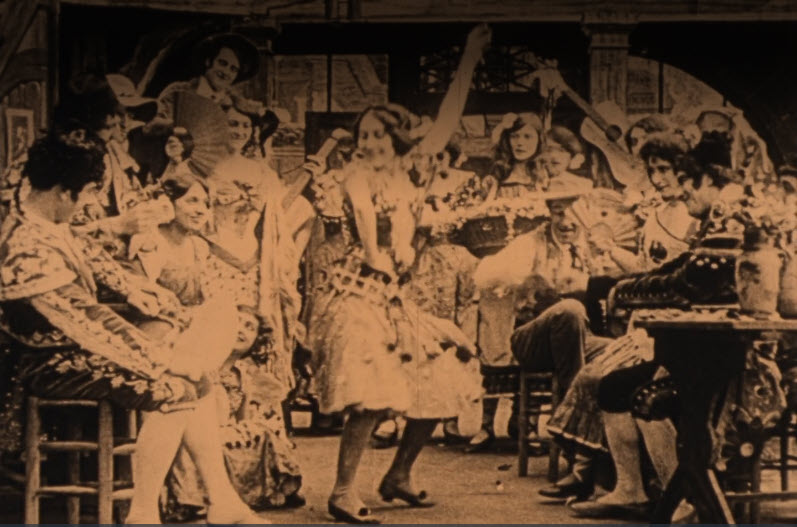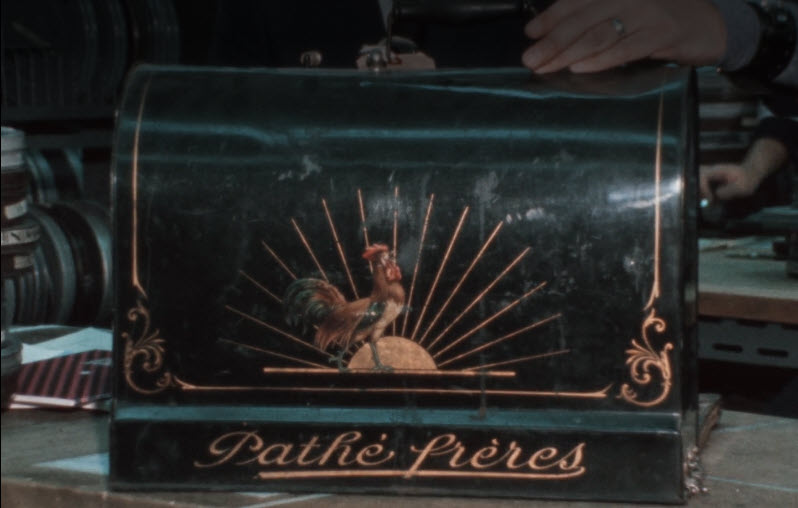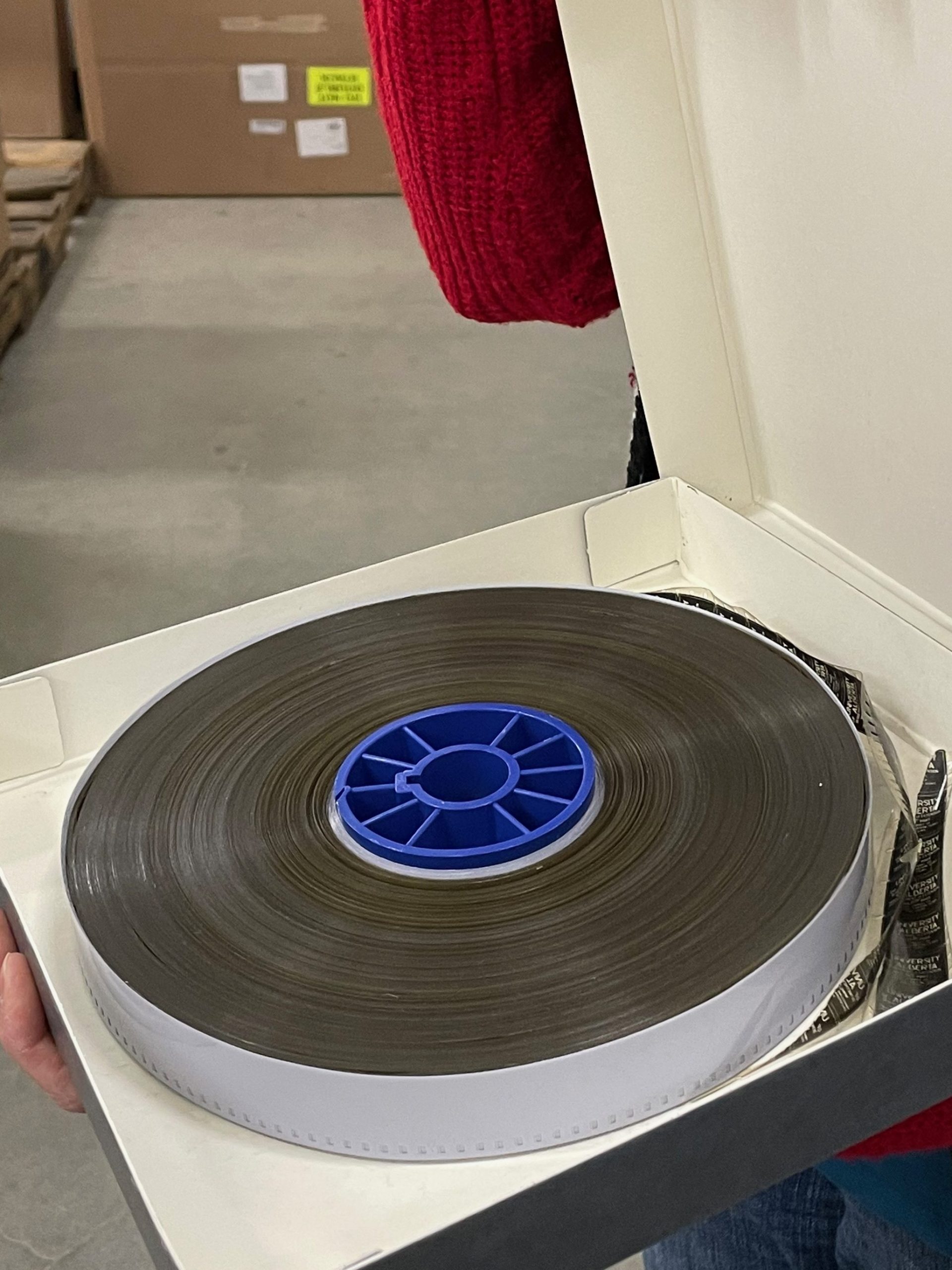In early December 2022 the University of Alberta Archives and Alumni Relations Events team partnered with Metro Cinema to host a screening of three recently restored and digitized silent films from the Archives’ holdings: Le charme des fleurs, Le Remplaçant and The Honor of the Law. These films have also been uploaded to and made freely available to the public through our digital audiovisual repository Aviary.

The tale of these three films is a fascinating one that helps illustrate the unique power of archives to help illuminate forgotten history. I talked with University Archivist Anna Gibson Hollow to learn more about the story behind these films.
What can you tell us about how these films came into the possession of UAlberta Archives?
They were originally part of the Faculty of Extension’s Traveling Library and were part of a larger records transfer from the Faculty of Extension. Until the opening of the Research & Collections Resource Facility (RCRF) Archives’ collection was scattered across multiple locations. Audiovisual materials were being stored in the basement of Rutherford Library, so the films were among the collections being stored there.
Until these particular film reels were brought to the RCRF, they were believed to be nitrate film, which is highly flammable. Our former Digital Archivist realized that they had been misidentified and were actually 28mm film and not a major fire risk. We knew they had to be quite old, because 28mm film stopped being made in 1920.
What was the process that your team took to identify what films were on the mystery reels?
Given that the film reels were such a rare format, it was quite a long process.
Finding a digitization company that was able to work with 28mm film meant going beyond our traditional channels. In fact, the first vendor we approached misidentified the reels as being 35mm format, but when we checked with the Provincial Archives they confirmed that they were 28mm format that had been stretched – probably from someone trying to put them through a 35mm projector.
There are few companies in North America that are able to work with 28mm film stock – fortunately we found an American company, Media Preserve. The team at Media Preserve were able to digitize and conserve the three reels. They removed dirt and rewound them. Once the films had been restored and digitized they were sent back to the Archives.
None of this would have been possible without grant money from the Government of Canada being made available to us.
Can you tell us a little bit about the historical significance of these films?
The films themselves aren’t particularly significant, there may be other copies in existence, but they play a part in the larger story of The Extension Travelling Library. The University of Alberta Library was first formed in 1913, and a film library was established in 1917. The film library purchased 150 films from a French film production and distribution company called Pathé Frères. One of the requirements when purchasing this film was that they buy a Pathé Frères 28mm projector to show the films. There’s an episode of the 1970s University produced program In Touch with U that features this projector in Aviary.

The whole purpose of the travelling library was to share resources with people living in rural areas, who made up about 70% of the province’s population at the time. These three films, the projector, as well as the other films in the collection travelled throughout Alberta and entertained its citizens in the late 1910s and early 1920s.
Sadly, we don’t know where the other 147 in the Pathé Frères collection ended up, so for now these three films are all that we know of in our collection.
What kind of environmental protections do these films and other audiovisual materials enjoy by being housed at the RCRF?
The film reels are stored with the rest of our audiovisual collection in the RCRF’s cold room. It’s a room where the temperature never goes above 9.5-10 degrees Celsius and the humidity is always 36%. These conditions slow the deterioration of the film stock.
The RCRF is also a very secure facility. It is fully alarmed and all staff work spaces, including the warehouse and cold storage room have additional security features to ensure that only staff working at the facility have access to these areas.

Are there other audiovisual materials in UAlberta Archives that you would like to see go through a similar process?
Yes! We have over 1600 film reels, 4000 video materials (cassettes, Betamax etc.) and 7000 audio materials in our holdings. While we have machines that can play a small percentage of these materials, so much of our collection is in a format that we don’t have the machines to play. To make these materials accessible to researchers we really need to digitize them. Our priority would be to digitize materials we aren’t able to play and materials that are starting to deteriorate.
Is there a way folks can help the Archives Team digitize more items?
We recently set up the Archives Digitization Fund where community members can make donations to enable us to make more of our audiovisual materials, including film reels, audio tapes, vinyl, photographic materials, accessible in a digital format. The support of our donors goes a long way to help assure that the items in our holdings are properly preserved and available to all.
Those who would like to make a contribution can do so through our online donation form.
The three films highlighted in this post, along with many other audiovisual treasures are available through the library’s audiovisual repository, Aviary. Researchers interested in exploring the University of Alberta’s Archival holdings can start their search on the Archives’ Website. If you’re new to the process we have a blog post with some great tips to help you to get started.
In-person visits to the Archive are by appointment only. There is information on how to make an appointment here.
